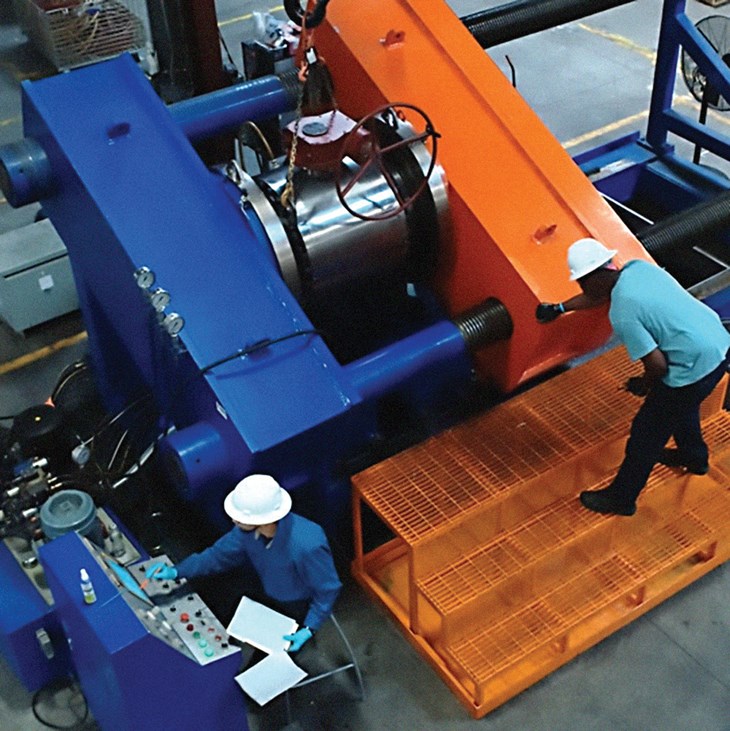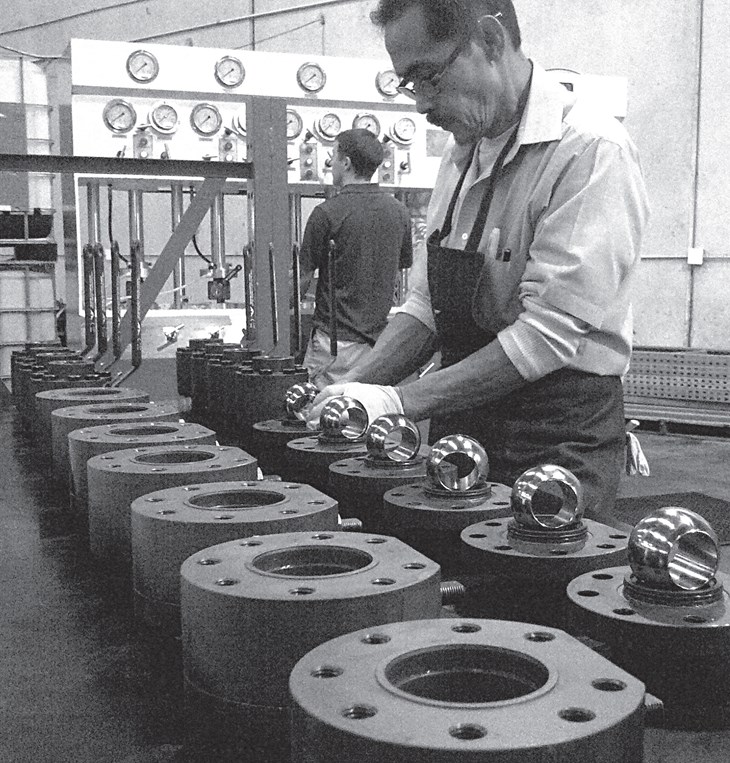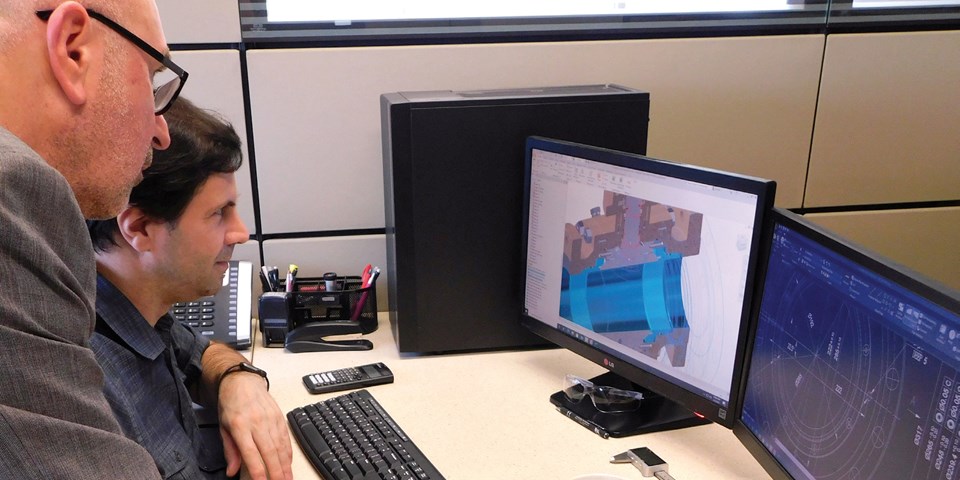Valve World Americas Journal was pleased to speak with Michael O’Quinn, President of International Standard Valve (ISV), Engin Gulgun, VP of Engineering, as well as the engineering team members Rogier Hubregsen, Iman Mirimoghadam and Joshua Fan about the valve design process and what fugitive emission requirements are considered throughout. Rich Davis also kindly weighed in as an expert fugitive emission consultant.
By Stephanie Matas
Valves are used in all piping sectors of the oil and gas industry. Each sector has varying design and feature requirements while sharing basic industry standards, such as ASME, API, ASTM and ISO for example. When it comes to addressing the needs of upstream, midstream and downstream markets, ISV endeavors to design valves that meets the needs of each of these demanding applications, including low emission product requirements. Each segment of the process line is subject to its own regulations and stipulations for fugitive emission control and abatement, so it is helpful to know the intricacies of the valve design process and considerations of the manufacturer.
Valve Design Process
When we talk about designing valves, we must first look at what the objectives are. “We have the luxury with these general types of valves to have industry standards that set guidelines. Industry standards includes size, classes, materials, code compliance are just a few of the considerations that need to be addressed when approaching valve design.”
The first step for any new valve design is responding to demand or an engineering optimization requirement. “It starts with demand. Why are you making the valve? What are you going to make it with? What is its purpose?”
An initial engineering review is then conducted to discuss input requirements, including applicable standards (ie. ASME B16.34, API 6D, API 600, API 609, etc.), output requirements, such as general assembly and part drawings, calculations, and technical documents (ie. Topworks, torques, installation, operations and maintenance manuals, P-T charts, Cv ratings, catalogs, items for market, etc.) and design planning, which includes a deliverable action plan, with responsibilities for the engineering, quality, and production departments. Further reviews are conducted as needed to solidify plans before production begins. “Upfront, you identify the standards you have to meet and the design criteria is presented in the standards itself.”
Following the review process, calculations are performed to determine Cv values, torques, bolt loads, stress, wall thicknesses, corrosion permission & allowance, and finite element analysis (FEA) is conducted on critical parts. “The engineering team runs through a complete design phase including calculations to create a design file. That design file is then turned into a prototype. The complete design process can take several months. For instance, the API 609 high performance butterfly valve we are currently in the middle of launching went on for over a year.”
Verification is then conducted to prove outputs match inputs, for example the initial drawings meet or exceed industry design standards and/or customer requirements. Next is validation, where the valves are subject to extensive supplemental testing, such as pressure testing, dimensional inspection, visual inspection, and type testing. (ie. Torque, anti-static, fire-safe testing, fugitive emissions, cryogenic testing) are critical steps in this stage.
One of these challenges that API 6D addresses is explosive decompression of the elastomeric materials. “When you have an elastomer o-ring in gas service in ASME class 600 or higher pressures that is rapidly removed from line pressure the o-ring design must overcome possible explosive decompression damage. This is where the elastomer material becomes blistered or torn by permeated media releasing itself from the o-ring material.”

In-Process Testing
Pressure test machines should be carefully selected to achieve the most accurate test result. The test machines should be designed to achieve a long service life, while protecting the product being tested and maintaining testing integrity. At ISV, these test machines are configured to test valves with a variety of end connections: flanged, butt weld, threaded, socket-weld, male and female ends or special hub ends and can test valves from sizes 1/4” to 42”, pressure classes up to 2500. Some machines are capable of testing multiple valves at the same time.
In order to maintain precise results, testing equipment including gauges are regularly monitored, serialized, and data is recorded in the calibration database. This database enables the company to track calibration history to the uniquely serialized valve that is produced and tested. After successful hydrostatic testing is completed the test fluid is drained and dried with compressed air. PMI is performed as a norm on alloy material components, including all grades of stainless steel. PMI test data is linked to the valve serial number. Other testing is frequently conducted based on valve design, materials, or customer specifications such as: M/P, L/P, U/T, R/T, chart recorded long duration testing, high pressure gas test (below ground bunker is utilized in-house).
Types of Valves
The most common upstream valves designs include API 6D ball valves and gate valves, API 6A gate valves. A gate valve is a multi-turn valve, so the operation is conducted by means of a threaded or screw type stem. A ball valve is a form of quarter-turn valve which uses a cylindrical bore or perforated bore, and pivoting ball to control flow through it. For midstream, API 6D and API 608 ball valves are most common.
Common body materials for gate, globe and check valves include WCB, LCC, C5, WC6, C12, CN7M & CF8M for cast materials and A105, LF2, F5, F9, F11, F22, F304 and F316 for forged materials. Ball valves are commonly made of carbon steels materials, ranging from A105, to WCB and LCC to LF2 for low temperatures uses. Common corrosion resistant body materials for ball valves are various grade of stainless steels including CF8M, F316, cast alloy, super duplex and Inconel materials.
ISV also manufactures two trunnion mounted ball valve designs for pipeline applications: the two-piece split body design (Series BT3B) and the three-piece bolted or welded body designs (Series BT3EU & BT3E and BT3GU & BT3G). “We have found that the Natural Gas pipeline industry generally prefers our three-piece design bolted or welded body designed product because they are made of forged materials, which is a more reliable material component than a casting and offers some standard features that are normally special order with other brands. Onshore production however uses two-piece casts as well as 3pc forged designs all the time. It just depends on user preference.” The trunnion valves are all API 6D, API 607 fire safe, ASME B16.5, B16.10, B16.25, B16.34, and NACE compliant.

Code Compliance
The company manufactures its valves to all applicable API standards including API 600, 602, 603, 608, 609, 623, 594, 6D – all the major standards that fall under API 624 & 641.
“ASME B16.34 is like our ‘standard rule’ for code compliance – piping in chemical plants, refineries, transmission & distribution pipelines, and power generation piping all have to meet these codes. For bolting loads, stress, and design, it pre-engineers guidelines and parameters that manufacturers need to pay attention to. Those codes design a whole string of compliance and engineering criteria that API adopts. These standards dictate that piping in the plants, including the valves, must meet requirements of ASME B16. 34, so that is why we call it the ‘standard rule’.”
For multi-turn valves and rising stem valves, such as gate and globe valves, the Fugitive Emission Test standard is API 624. For quarter-turn valves, such as ball valves & butterfly valves, the API Fugitive Emission Test standard is 641.
“There is a unique design to ball valves related to pressure—temperature limits, as the sealing mechanisms are generally soft seals, made of materials such as Nylon, PTFE, Teflon, Devlon, Delrin and other name-branded soft seat polymers, etc. In many cases, especially in midstream and downstream processes, elastomers in the O-ring sealing material present their own challenges because of their limits related to temperature and chemical compatibility. Some of those materials are also affected by hydrocarbons.”
“Once the valve has passed the testing process, serial numbers are applied to it and the valve is born at that point.” The final step of the valve design process is launching the product to market. “Painting, washing, and spray cleaners are applied to the valves after final inspections. Quality personnel make sure the valve is clean and ready to be shipped when necessary.”
Meeting Low-E Challenges
In recent years, the industry has seen a greater number of midstream end users specifying API Low emission standards than in years past, valve manufacturers that are familiar with API 624 and API 641 are most capable to fulfill those requirements.
API believes that over time, attitudes are going to change. And as they do, people will open up to different approaches. “There is a lot of forward-looking innovations right now on fugitive emissions that will shift a lot of the conversation if and when these new documents come out about high temperature requirements.”
Most manufacturers work with a well-managed approved suppliers list for O-rings and other soft materials used in their valves. Selecting a qualified packing based on API 622 performance for a ball valve can be challenging depending on the application and designing an effective packing design configuration (ie. sandwich stack, varying packing types) may require a lot of trial and error. Properties of the stem such as straightness, cylindricity, smoothness/roughness all contribute to its overall fugitive emission performance and must be managed diligently. Engineering teams pay attention to gland geometry and will tweak packing load adjustment methods as necessary for prime optimization.
When handling fugitive emission standards and regulations, the breadth of knowledge needed to stay informed and on top of the ever-changing environment is vast. These challenges can be met by remaining close to standards committees like API and ASME that directly affect the designs of the valve products, and continually educating the work force as new changes arise.


